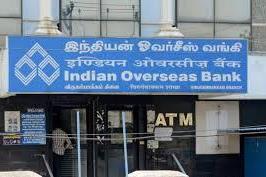Now Indian Overseas Bank seeks about Rs 1,000 cr capital support
New Delhi: Indian Overseas Bank (IOB) has sought a capital support of about Rs 1,000 crore from the government in order to create buffer for any exigency, a top official of the bank said.
The state-owned lender, which has posted profit for the last three consecutive quarters, expects to continue the trend in the remaining part of the current fiscal year with increased focus on recovery and business pick up.
For September quarter, the bank posted a profit of Rs 148 crore as compared to a net loss of Rs 2,254 crore in the same period a year ago. Net profit in the quarter grew 22.3 per cent from Rs 121 crore in April-June.
“We expect the trend to continue and book profit quarter after quarter aided by prospects of better recovery. There will be no question of going back,” IOB Managing Director P P Sengupta told PTI.
Asked about capital needs, he said, “we want our profit to strengthen our capital. That is our internal aim and we are marching towards that goal. As a prudent measure, we have sought some capital support, let us see how much we get. We want to keep capital as buffer for any exigency or contingency.”
Further prodded on the quantum, he said, the request is for something less than Rs 1,000 crore.
The accumulated profit of the entire financial year will further boost capital adequacy ratio which is close to 11 per cent at the end of September 2020, he said.
As a part of the first batch of Supplementary Demand for Grants for 2020-21, Parliament in the monsoon session gave approval for infusing Rs 20,000 crore in public sector banks (PSBs) in the current financial year to meet regulatory requirements.
In 2019-20, the government made capital infusion of Rs 70,000 crore into PSBs. Of this, IOB got Rs 4,360 crore.
Sengupta further said the bank has approval for raising Rs 5,000 crore from the market but there is no immediate plan.
“We would be cautious and there is no plan in third quarter as far as raising funds from the market is concerned,” he added.
Talking about strengthening of balance sheet, Sengupta said, “one thing is very clear that we are on track. On sequential basis also profits have gone up despite increasing provisions. The idea is to make balancesheet stronger and therefore we have made adequate provisions including that for COVID-19 of Rs 682 crore, which is 5 per cent of the loan book.”
The bank wants to bring down the gross NPA below 10 per cent by March with the help of pick up in advances and recovery, he said.
The Chennai-based lender expects to reduce the NPA by Rs 2,000 crore during the second half of this fiscal year.
During the second quarter, the bank registered a substantial improvement in asset quality as gross non-performing assets (NPAs) plunged to 13.04 per cent of gross advances from 20 per cent at the end of September 2019.
In value terms, gross NPAs or bad loans fell to Rs 17,659.63 crore as against Rs 28,673.95 crore a year ago. Net NPAs reduced to 4.30 per cent (Rs 5,290.60 crore) from 9.84 per cent (Rs 12,507.97 crore) a year ago.
